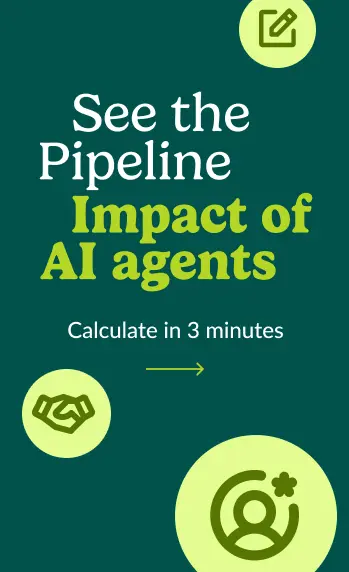3 Pillars of Reliable Data for Revenue Orchestration
Published:

Data-driven go-to-market strategies often face a paradox: the more data you have, the more work it takes to extract meaningful insights.
Fortunately, too much data isn’t a problem for artificial intelligence. The more data AI can access, the more it learns and grows. The hitch? That data has to be trustworthy.
When your revenue strategy leverages AI-driven technology, your success hinges on the quality of your data. This post explains why revenue orchestration depends on high-quality data and describes three factors of reliable data.
AI for revenue orchestration platforms vs. generalist AI
Revenue orchestration is the strategic alignment of sales, marketing, and customer success teams through technology, workflows, and data. It’s about creating a cohesive system that streamlines go-to-market (GTM) processes, ensuring teams work together seamlessly to engage buyers and drive revenue.
AI plays a pivotal role in revenue orchestration platforms by powering this alignment. Unlike general-purpose AI, which is built for a broad range of tasks, the AI in revenue orchestration platforms is specifically designed to support GTM activities.
At Salesloft, for example, we built our data model to associate buyer signals and sales activities through contacts and accounts to outcomes. It’s the only data model that can tell you what's really happening and what's working in your revenue machine. And when you know what’s working, it’s only a matter of time until you’re driving durable revenue growth.
A strong revenue orchestration platform filters out the noise and serves frontline GTM teams with clear intent signals and actionable recommendations. Good AI starts with aligned and accurate data — the foundation for all insights and recommendations.
Why reliable data is the heart of revenue orchestration AI
As the old saying goes: garbage in, garbage out. You'll need reliable data to get good insights and recommendations from a Revenue Orchestration Platform.
“If the data is not good, the likelihood is you won't get the right insights,” says David Obrand, Salesloft CEO.
They won't drive the right actions, and those actions won't drive the right outcomes. And if we guide our sellers to actions that don't drive the right outcomes, they will immediately lose confidence in either the system or the leadership.
Let’s explore three pillars of data reliability for successful revenue orchestration.
#1 – Data completeness
Revenue orchestration captures the entire customer journey, end-to-end. You can’t get a holistic view of buyers if your data is largely incomplete.
Look for tools that collect every customer touchpoint, from initial engagement to in-product signals of renewal interest.
With buying groups larger and more complex than ever, understanding accounts means capturing touchpoints for every member of the buying group. A revenue orchestration platform integrates buyer signals across all channels and touchpoints, ensuring dramatically fewer data gaps.
#2 – Data accuracy
Data accuracy goes beyond error-free data entry.
In sales, data can become outdated quickly. Without real-time updates, data might not reflect the current reality. Additionally, silos can lead to conflicting data across departments.
Reliable data requires:
- Timely updates to maintain relevance.
- A single source of truth shared across all departments to eliminate inconsistencies.
#3 – Data governance
Data governance ensures proper data usage and compliance. Revenue orchestration depends on robust governance measures, particularly for sensitive data like personally identifiable information (PII).
Manage data access controls to give every role in your organization appropriate access and visibility for the data they need and limit access to that they don’t. Thoughtful data governance rules will make it easier to scale compliant data access as your organization grows.
Prioritize reliable data for smooth revenue orchestration
If you’re ready to upgrade your go-to-market strategy with a revenue orchestration platform, your first step is to ensure your revenue data is complete, accurate, and well-governed.
Prepare your data for revenue orchestration by automating data entry whenever possible. Tools that automatically capture data eliminate human error and prevent data from going stale whenever a busy rep skips a step.
With automation to keep your data reliable and up to date, you’ll be ready to navigate the complexity of understanding today’s buyers and buying process.
Learn more about the critical elements of revenue orchestration and how to prepare your team for success. Download our comprehensive guide, The Blueprint for Revenue Orchestration.





























